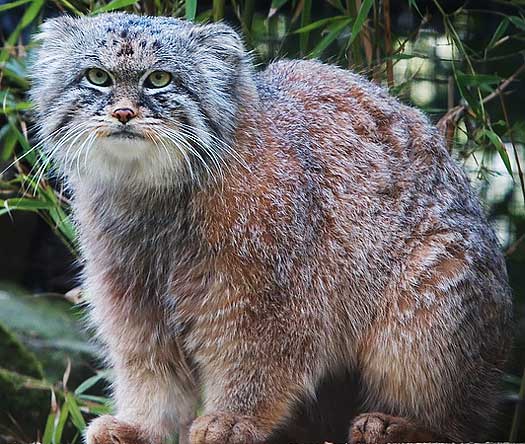Pallas’ Cat – Manul, Thickest Fur of Wild Cats
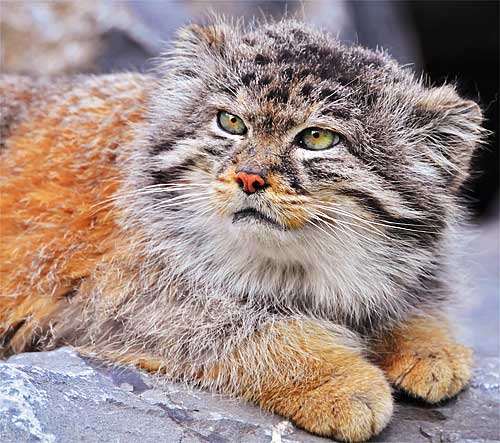
The Pallas’ cat is of the feline family. Named after the naturalist Peter Pallas who first described them, they are believed to be one of the oldest living cat species. They’re roughly the size of a domestic cat with the average male’s body length being around 20-24 inches (50-62 cm) and its weight around 10 lbs (4.5 kg). This species is also known as the Manul and has only been known as Pallas’ cat since the 18th century.

The Pallas’ cat is quite unusual in its appearance as it has long, dense fur, a massive furry tale, bunched hair on its cheeks, wide-set ears and a slightly flat head. The pupils are round unlike the vertical slit pupils of domestic cats. Its coat is mainly gray although can occasionally be auburn with thin black stripes running down its back. There are two dark stripes on its face which run from its eyes to its muzzle and the small black spots on its forehead distinguish it from other wildcats. It has short stumpy legs in comparison to the rest of its body.
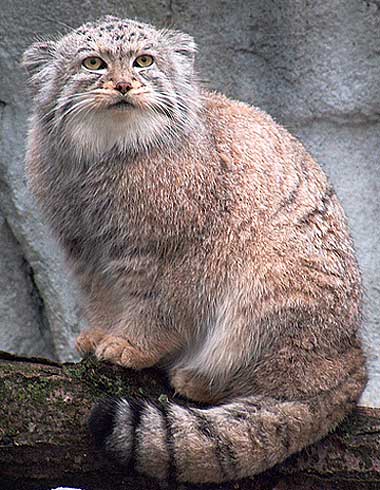
Pallas’ cat prefers to live on rocky ridges and mountainsides sometimes as high as 9800 feet (3000 m). This is why they have such thick, long fur. They make their dens in the burrows of smaller burrowing animals such as marmosets or in mountain crevices. The species is native to many regions including Mongolia, China, the Kazakhstani borders and in a few parts of Russia. It can live comfortably in climates as low as -58 degrees Fahrenheit (-50 C).
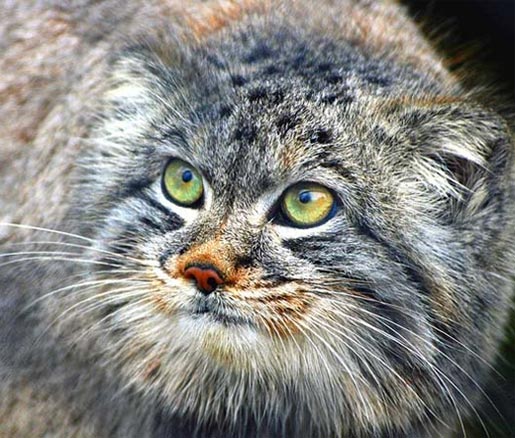
This species is nocturnal and lives solitary. It’s active during the dusk and evening periods and if it feels at risk of a predator or any danger it conceals itself amongst rocks and grasses. It’s a carnivorous species and its diet consists mainly of small animals including birds, pikas and rodents. During the day they usually choose to hide and sleep in their dens but have been seen on occasion to be stretched out enjoy the sunshine.
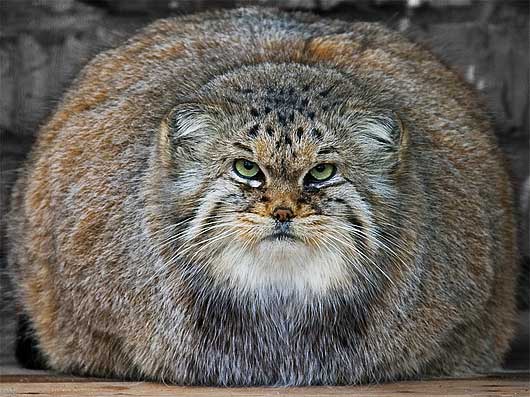
There are three subspecies of the cat: the Siberian which is generally gray coated, Middle-Asian which has red-orange fur and the Tibetan which has a darker coat. Each species occur in different regions across Asia and Russia.
